Let's practice some Vinyasa Yoga, a sequence of postures for the whole body [Eng - Esp]
23
About :

Español
Practiquemos un poco de Vinyasa Yoga, una secuencia de posturas para todo el cuerpo
Hola mis queridos amigos de Full Deportes y de todo Hive, espero que estén disfrutando de este día.
En esta ocasión estaremos viendo una secuencia de Vinyasa Yoga, bastante tradicional. Si bien el Vinyasa es un Yoga un poco más dinámico que el Hatha Yoga, sigue manteniendo su intención de trabajar de manera integral con el cuerpo, y hace foco en la transición de una postura a otra, acompañando a cada movimiento con la inhalación y la exhalación.
Veremos las siguientes Asanas:
- Anjaneyasana (Postura de la Luna Creciente)
- Anjaneyasana en torsión
- Parsvottanasana (Postura del estiramiento lateral intenso)
- Ardha Chandrasana (Postura de la Media Luna)
- Natarajasana en una variación (esta es la postura del Danzarín en variación, pero también puede considerarse una variante de Ardha Chandrasana)
- Viparita Virabhadrasana (Postura de Guerrero Invertido)
- Virabhadrasana II (Postura del Guerrero II)
- Utthita Parsvakonasana (Postura del ángulo extendido lateral)
- Adho Mukha Svanasana (Postura de Perro Boca Abajo)
- Urdhva Mukha (Postura de Perro Boca Arriba)
- Bhujangasana (Postura de Cobra)
- Balasana (Postura de Niño)
English
Let's practice some Vinyasa Yoga, a sequence of postures for the whole body
Hello my dear friends of Full Deportes and all Hive, I hope you are enjoying this day.
This time we will be looking at a very traditional Vinyasa Yoga sequence. Although Vinyasa Yoga is a little more dynamic than Hatha Yoga, it still maintains its intention to work integrally with the body, and focuses on the transition from one posture to another, accompanying each movement with inhalation and exhalation.
We will see the following Asanas:
- Anjaneyasana (Crescent Moon Pose).
- Anjaneyasana in twisting
- Parsvottanasana (Intense Side Stretch Pose)
- Ardha Chandrasana (Crescent Moon Pose)
- Natarajasana in a variation (this is Dancer's Pose in variation, but can also be considered a variant of Ardha Chandrasana)
- Viparita Virabhadrasana (Inverted Warrior Pose)
- Virabhadrasana II (Warrior Pose II)
- Utthita Parsvakonasana (Lateral Extended Angle Pose)
- Adho Mukha Svanasana (Downward Facing Dog Pose)
- Urdhva Mukha (Upward Facing Dog Pose)
- Bhujangasana (Cobra Pose)
- Balasana (Child's Pose)




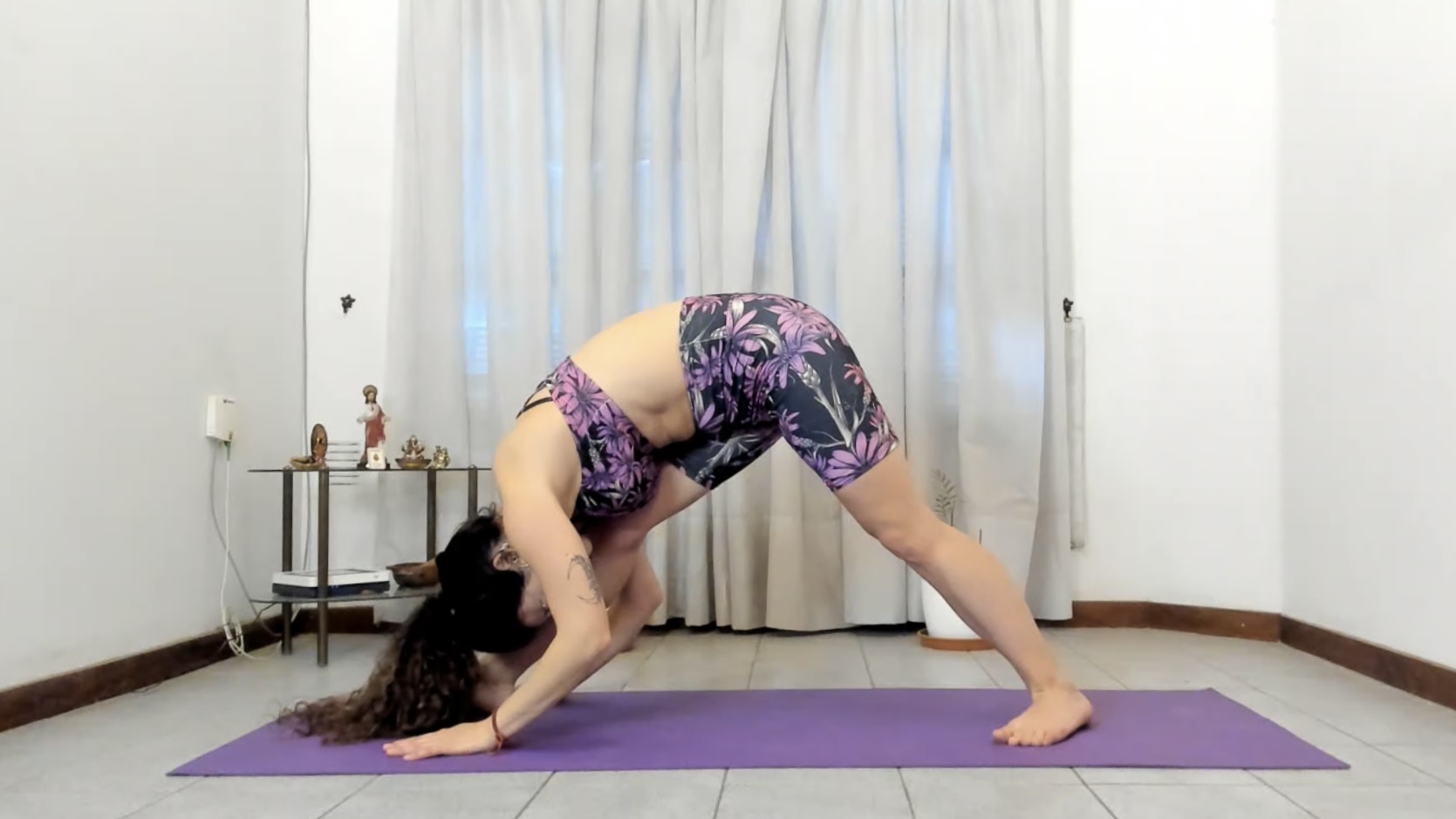
Todas estas poses nos conducen a un completo movimiento del cuerpo y favorecen la activación de los diferentes grupos musculares, tanto para el armado como para sostener cada postura.
Al mismo tiempo, promueven el estiramiento de diferentes partes del cuerpo, como la columna, que entra en flexión y extensión varias veces, y en cuanto a los músculos, se observa fuerte elongación de abdominales, tanto oblicuos como el recto abdominal (este último fuertemente trabajado con Bhujangasana y Urdhva Mukha en su elongación), y de isquiotibiales, glúteos y aductores en posturas como Parsvottanasana.
Tanto piernas como brazos en sus diferentes músculos como bíceps, deltoides, tríceps, cuádriceps, gemelos, se activan en posturas como Virabhadrasana en las dos versiones practicadas en esta oportunidad, y en Adho Mukha o Urdvha Mukha al sostener el cuerpo. Estas dos posturas también favorecen la flexibilidad de la cintura escapular, que permanece cerrada en Urdhva Mukha y debe abrirse y expandirse en Adho Mukha, acompañado de una intensa rotación externa de hombros, desafiante en esta postura.
All these poses lead us to a complete movement of the body and favor the activation of the different muscle groups, both for the assembly and for holding each posture.
At the same time, they promote the stretching of different parts of the body, such as the spine, which goes into flexion and extension several times, and as for the muscles, strong elongation of the abdominals is observed, both obliques and rectus abdominis (the latter strongly worked with Bhujangasana and Urdhva Mukha in its elongation), and hamstrings, buttocks and adductors in postures such as Parsvottanasana.
Both legs and arms in their different muscles such as biceps, deltoids, triceps, quadriceps, calves, are activated in postures such as Virabhadrasana in the two versions practiced in this opportunity, and in Adho Mukha or Urdvha Mukha when holding the body. These two postures also favor the flexibility of the shoulder girdle, which remains closed in Urdhva Mukha and must open and expand in Adho Mukha, accompanied by an intense external rotation of the shoulders, challenging in this posture.
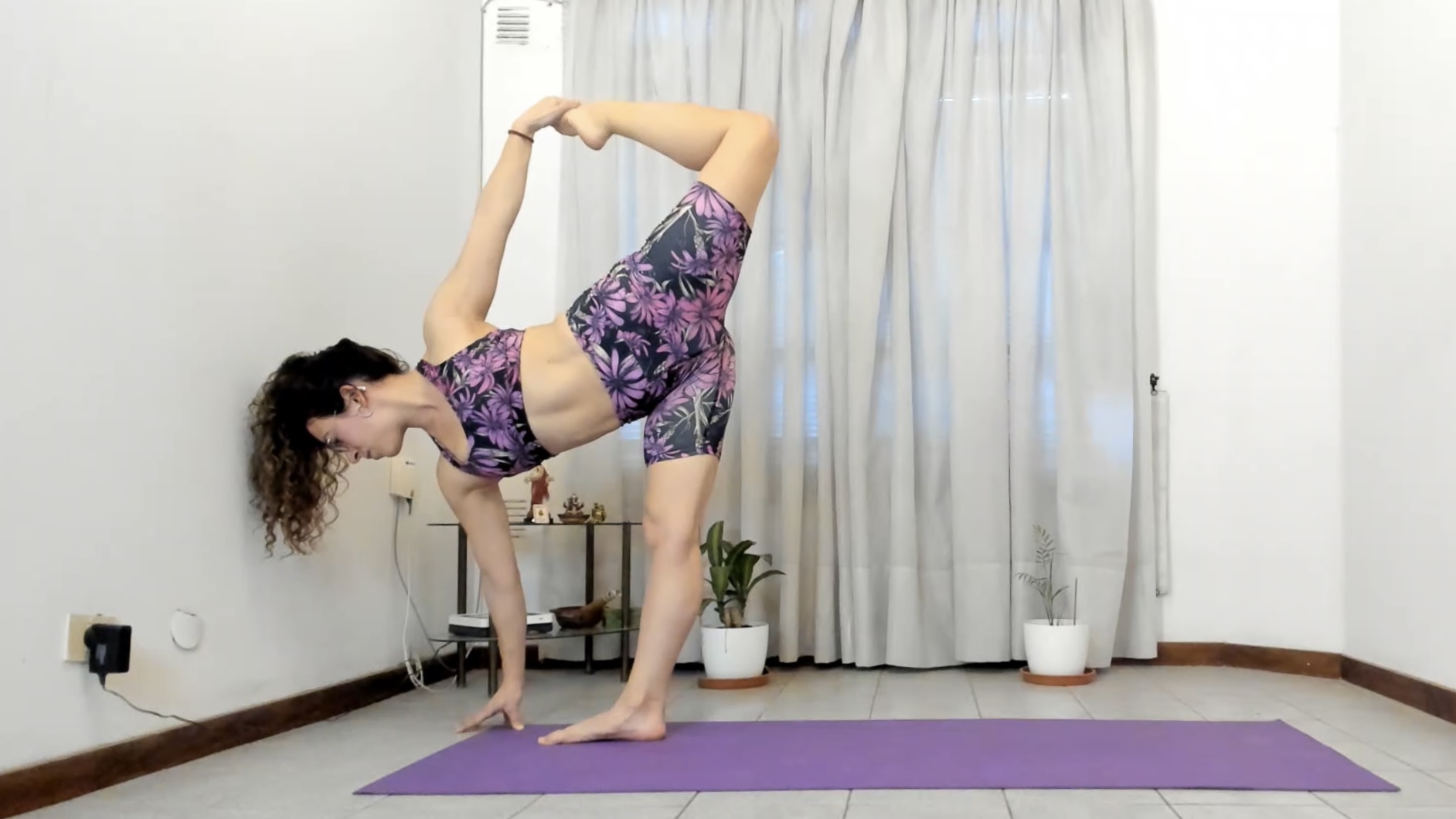




Duración de la práctica
Esta secuencia realizada de manera consciente y siguiendo el ritmo pausado de la respiración, puede tomar entre 15 y 20 minutos. Constituye principalmente la parte “solar” de una práctica de Yoga, que acude a la energía agni, masculina, que significa la acción, el fuego, la actividad. Sería bueno complementar una práctica como esta con posturas antes y después de las compartidas, que respondan a una energía soma, femenina, lunar, de calma y relajación.
Duration of practice
This sequence, performed in a conscious manner and following the slow rhythm of the breath, can take between 15 and 20 minutes. It constitutes mainly the "solar" part of a Yoga practice, which appeals to the agni, masculine energy, meaning action, fire, activity. It would be good to complement a practice like this with postures before and after the shared ones, which respond to a soma, feminine, lunar energy, of calm and relaxation.

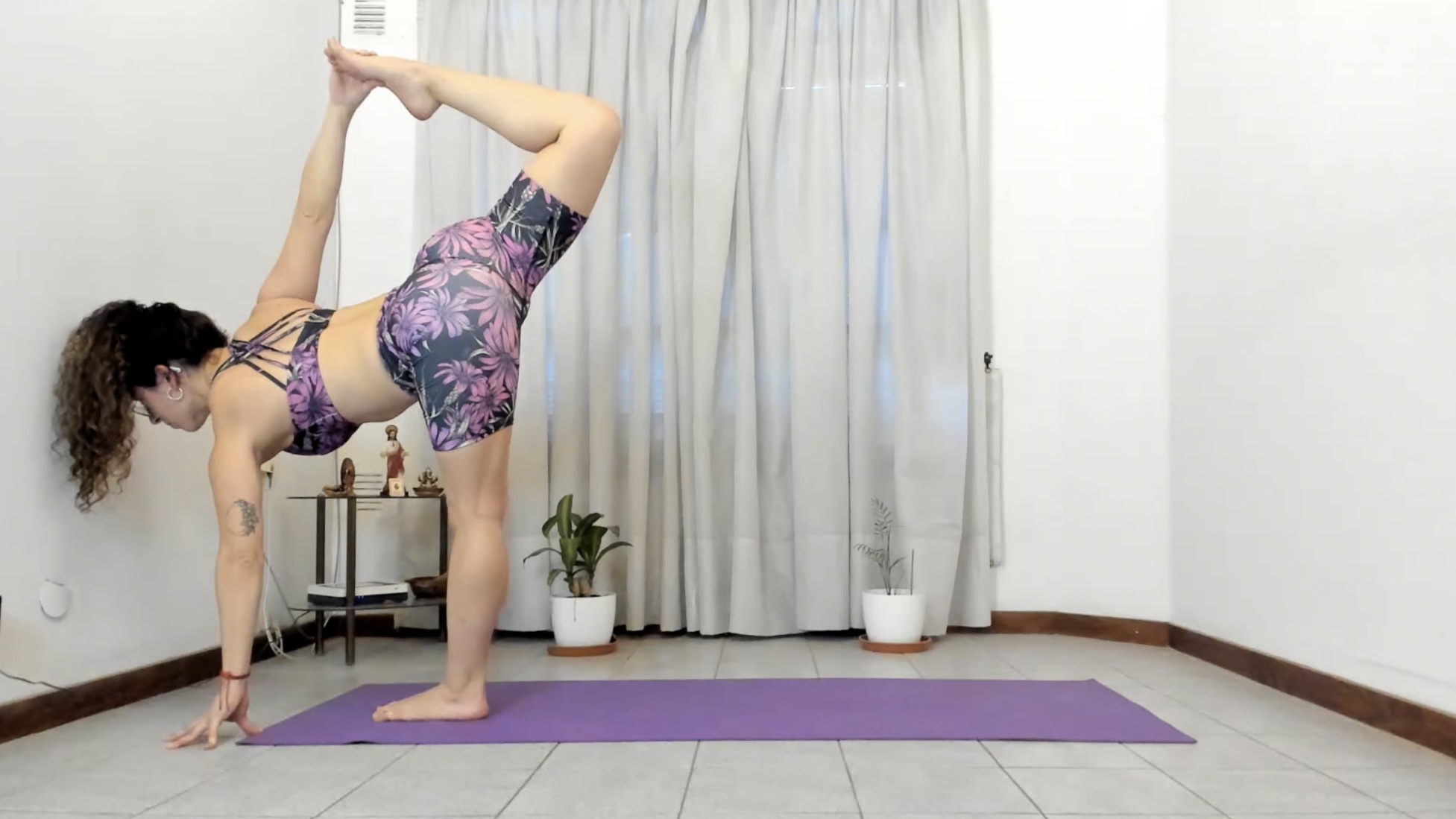


Precauciones
La verdad es que es una práctica inofensiva. Puede realizarla cualquier practicante, incluso en su nivel inicial. Solamente recomiendo tener en cuenta las líneas al momento del armado de cada postura, pues sí que es necesario que la rodilla se alinee con tobillo, hombro con muñeca, en especial cuando estamos sosteniendo de manera activa al cuerpo.
He mencionado esto en otros posts, por ello no quiero ser reiterativa con el tema, pero creo que es bueno siempre mencionarlo, para quienes me leen por primera vez.
Precautions
The truth is that it is a harmless practice. It can be done by any practitioner, even at a beginner level. I only recommend to take into account the lines at the time of the assembly of each posture, because it is necessary that the knee is aligned with the ankle, shoulder with the wrist, especially when we are actively supporting the body.
I have mentioned this in other posts, so I do not want to be repetitive with the subject, but I think it is always good to mention it, for those who read me for the first time.



Beneficios
Sí que es una muy buena práctica para despertar al cuerpo y a la mente, para elevar la vibración y para activar si es que hay fatiga o desgano. Además favorece la actividad de los músculos de todo el cuerpo, por lo que la sensación al terminar esta breve secuencia, es de un gran equilibrio general del organismo en compañía de la mente.
Aunque no hay posturas específicas de relajación y con una energía más lunar, al haber implementado flexiones intensas como en Parsvottanasana y Utthita Parsvakonasana o extensiones como Bhujangasana, se ha apelado al movimiento energético más íntimo, en un “encuentro”, ir hacia adentro. Estas posturas promueven la calma mental al realizarlas, por lo que la práctica se siente muy equilibrada también en su flujo energético.
Si bien es una práctica que “activa”, al mismo tiempo, relaja. A mi me gustó mucho hacerla, espero que te pase lo mismo y te invito a que te animes. Aunque nunca hayas realizado Yoga, siempre es un buen momento para hacer una prueba 😊.
Benefits
Yes it is a very good practice to awaken the body and mind, to raise the vibration and to activate if there is fatigue or listlessness. It also favors the activity of the muscles of the whole body, so the feeling at the end of this short sequence, is a great overall balance of the body in the company of the mind.
Although there are no specific postures of relaxation and with a more lunar energy, having implemented intense flexions as in Parsvottanasana and Utthita Parsvakonasana or extensions as Bhujangasana, it has appealed to the most intimate energetic movement, in an "encounter", going inward. These postures promote mental calmness while performing them, so the practice feels very balanced also in its energetic flow.
While it is a practice that "activates", at the same time, it relaxes. I really enjoyed doing it, I hope the same happens to you and I invite you to encourage you to do it. Even if you have never done Yoga, it is always a good time to give it a try 😊.

Espero que les guste!!
Que sigan hermoso este día y muchas gracias por estar aquí!
Con cariño,
I hope you like it!
I send you love and a big hug and thanks a lot for being here!
With love,
Datos de edición
Dispositivo: Logitech BRIO
Banner: Canva
Aplicación de edición: InShot (versión de pago)
Traducción: DeepL
<Música (provided by InShot): Reach You - Lacore Diamond
Link
Edition data
Device: Logitech BRIO
Banner: Canva
App for video edition: InShot (Paid version)
Translation: DeepL
Music (provided by InShot): Reach You - Lacore Diamond
Link


Tags :
Their limit for today is $0!



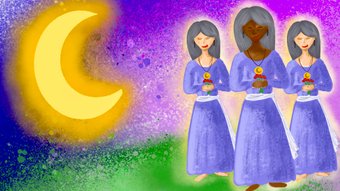



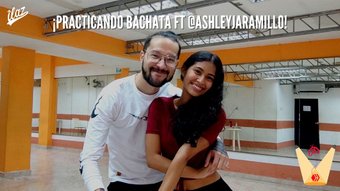












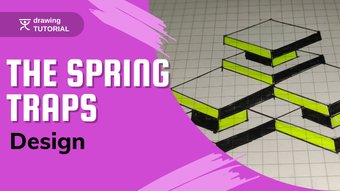








Comments:
Reply:
To comment on this video please connect a HIVE account to your profile: Connect HIVE Account